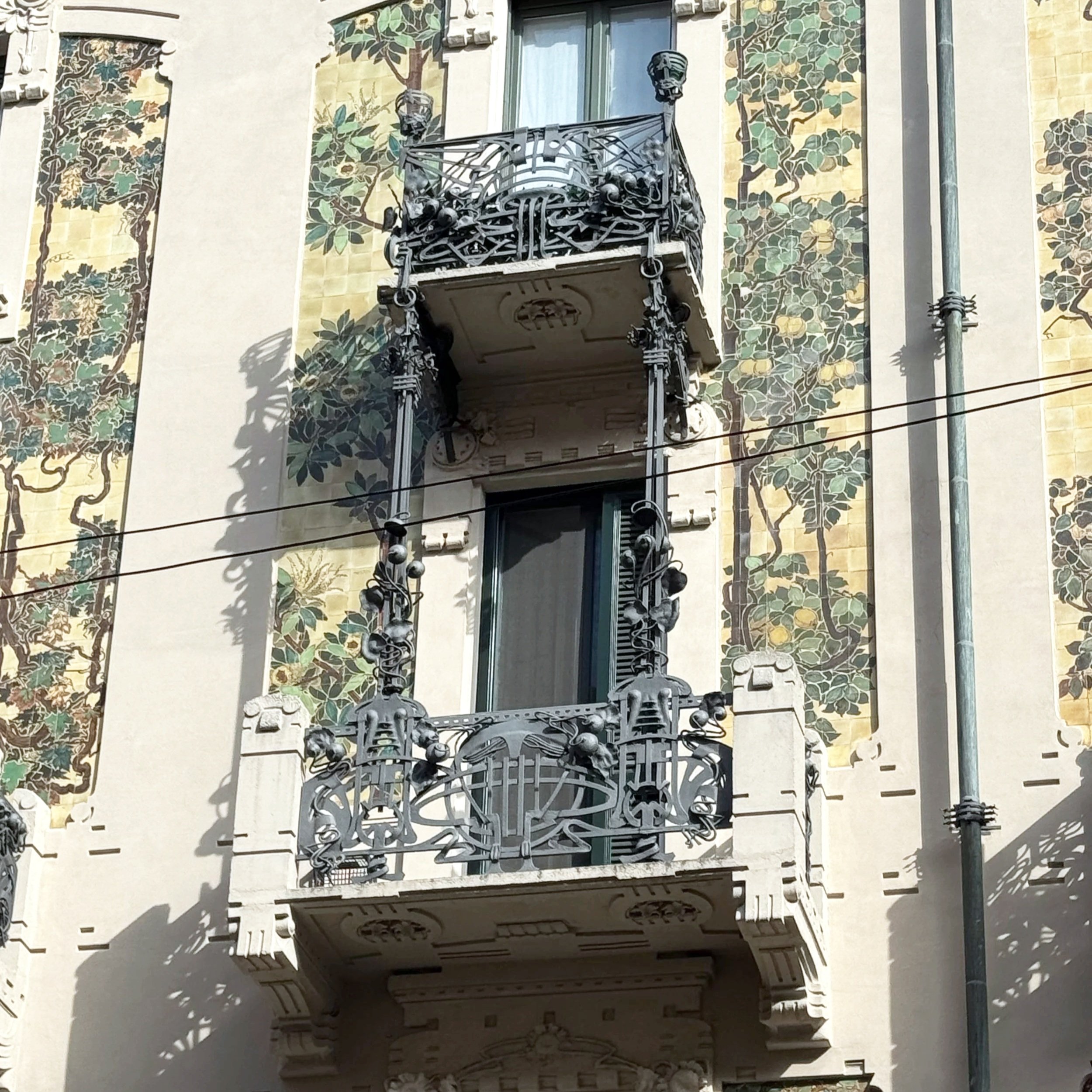Architecture in tights
It is more often than usual that I think about architecture, aesthetics, and buildings when I travel to Italy. I guess it might be the case for some people. It was during my recent trip to Milan that these thoughts visited my mind again: “Why do I sometimes feel perplexed when I am at the center of a big city? What are the things that make me feel a little overthinking? Is it the crowded streets or something deeper?”
Architecture and people— to what extent are they connected? What if we separate them hypothetically and investigate each separately? So, let’s imagine that we focus on people only and keep the surroundings blurred, as if we chose portrait mode on the phone. Can we, by looking at the people around—their appearance and manners—imagine how the city they temporarily or permanently live in should look? And let’s assume that we look at all groups, including tourists, to make our imagination more interesting and relevant, as nowadays, particularly in big cities, there are lots of tourists on the streets.
I am having this inner dialogue sitting in a fancy café in Milano. There’s a view of the cathedral, a historic place, a luxurious interior—mosaic on the walls, terrazzo floors, wooden furniture, music—jazz or classical. All of this makes you think that you must meet properly dressed people, hear intelligent dialogues, or at least just the noise of the crowd. I bet you have already guessed that the reality was not the way I fantasized it, and that’s fine—it gives even more reasons to continue this writing.
The reality was: people wearing sports clothes and tights, loud conversations, children who are allowed to do whatever they want, postures and styles like in a gym or spa, with people almost repeating the form of the chair, which is curved in an elegant Italian way.
I thought: “It is amazing how thoughts can quickly become heavier and writing can change to ‘science’ rather than simple and playful words about an Italian vacation and a relaxed atmosphere.”
Can those people mentioned above speak the same “language” as the city and the architectural style they are currently in? I don’t see this happening, and this is what makes me feel a little sad. I mean, this enormous dissonance between the way people dress and act versus the rich, luxurious interiors and buildings, which seem out of context. Although these buildings look massive and timeless, they are “alone.”
Perhaps the role of the architect is not just to make these buildings turn into museums for their second...tenth life. Maybe the role is much bigger? To serve as a deep analyst who will take into account as many social, historical, cultural, and engineering aspects as possible? Maybe AI can help with this task? As a result, can we connect those lonely buildings with the crowd? As you may see, this is only possible if the crowd becomes interested in this transformation. There are several ways to make this possible.
I am leaving the café and going back to another district of the city—Porta Romana—less touristic, predominantly Art Nouveau style, at least that’s what I noticed. People here are in general dressed up differently from my first scene, although they are easier going and relaxed. That was how I felt it. Obviously, it is less hectic and casual since it is farther from the city center.
Yet, still, that Art Nouveau style and the way people look, including myself, are far apart from each other. If you wanted to describe the Art Nouveau style in simple words, I reckon you would say something like: eccentric, artisan, experimental. That’s definitely not readable in what we wear.
Let’s dig just for a minute into when this style was invented and what type of society we associate with it. It appeared around 1900, and one of the features of that style, which I really love, is that it leaves a trace not only in building design but also in other industries such as fashion or jewelry. Craftsmanship was greatly valued back then, and we can see it from some buildings—the details feel stylistically the same but are executed very differently. Yet, nowadays craftsmanship has almost disappeared in how people are dressed.
On my way to the hotel, I feel fatigued from these thoughts. I wanted to make my writing and notes more organized, but I think this is where I will stop. This writing is complete and makes those who read it think about how we are connected to the buildings we look at through our styles. If there is no connection, then there is no interest. If there is no interest, we are just surrounded by noise and blur.
I am intentionally not going to mention how that city would look if we take the way people are currently dressed on the street. What image of the building appears in your head when you think of sports tights, second-hand jackets, sneakers, jeans? I will let you discover that yourself.


